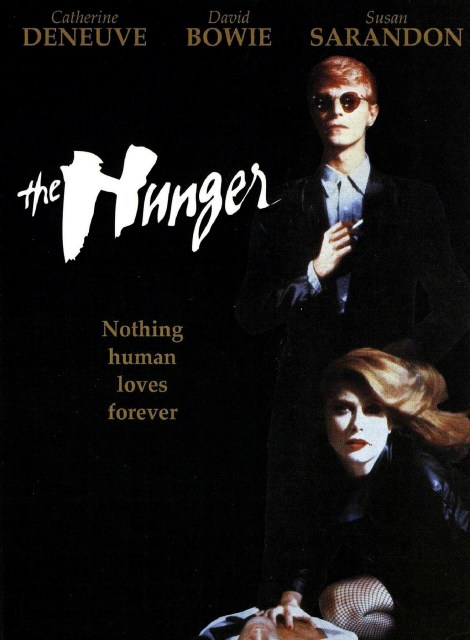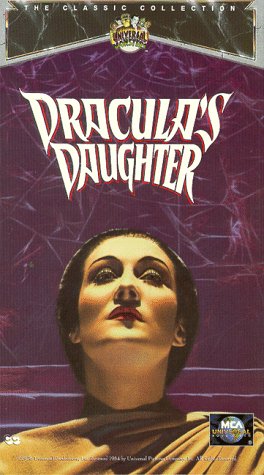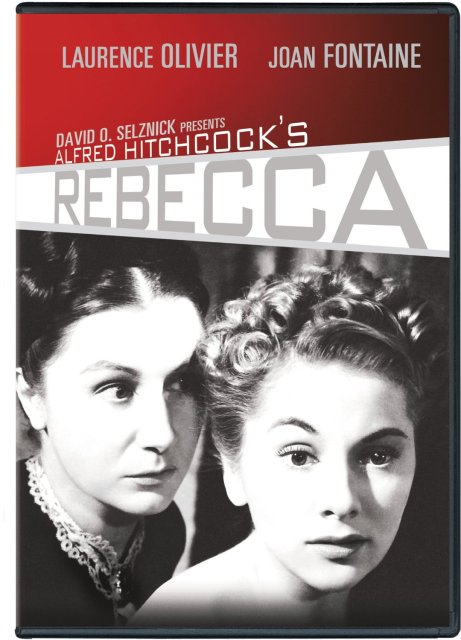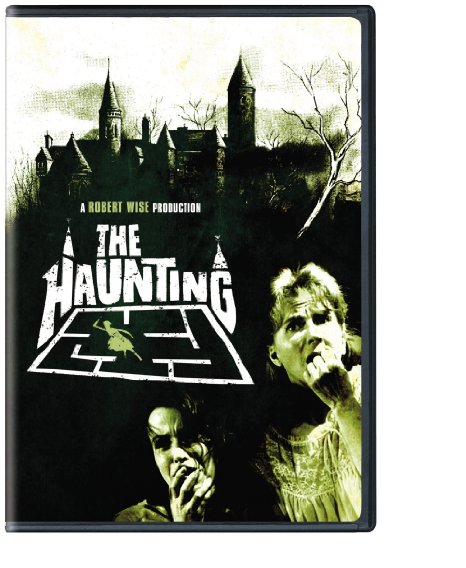This past Spring, I was at a straight bachelorette party being held in a couple cabins in the woods in rural Texas. Earlier in the day I had been wandering around the property, and I found a pile of bleached bones just sitting in a pile on the back deck. (Cabin in the Woods, anyone? Cabin Fever? Texas Chainsaw Massacre? I’m just saying, it was creepy.) Now, it was past midnight, pitch black and full of, I dunno, nature noises. We were all hanging out in a group in the cabin with the hot tub, but someone needed to go next door to get the rest of the champagne. “I’ll do it,” I said intrepidly, “I’ve seen a lot of horror movies and the lesbian never dies.” A redhead in the hot tub burst out laughing, “I don’t think there’s a lot of representation from which to draw that conclusion, hon.” I asked her what she meant and taking another drink of her cocktail, with perfect Southern inflection she quipped, “I’m just saying — hurry.”
I recount this story here to underscore exactly how serious it is that queer people have little to no representation in horror films. How do we know what to do when we are in a cabin in the woods? What if there is a scary noise in the basement, should we go to investigate it instead of our heterosexual friend? How likely are we to be murdered after losing our virginity? As Halloween approaches, these are pressing questions, and no one seems to be talking about how the queer community has a substantially slimmer playbook from which to draw when it comes to staying alive during the spookiest time of year.
It’s no secret that the 20th century was incredibly gay. Gay stuff was everywhere, except everyone had to deny that it was gay stuff, so it was usually couched in some kind of plausible deniability. Nothing provides plausible deniability like the supernatural, and so classic Hollywood horror films were practically primed for representations of homoeroticism and heterosexual anxieties about queer life, which was already horrifying to the mainstream. What’s more, most of these are genuinely fantastic films — coincidence? I think not.
5. The Hunger (1983)

Okay, so, The Hunger is not technically from Hollywood’s classic era, but this has some benefits. The major one is that there isn’t the same need to disavow its queer content, and so its lesbian themes are much more on the surface than the other films in this list. It is, also, probably the visual pinnacle of goth culture, featuring a dramatic performance by David Bowie as well as an epic intro by the death rock band Bauhaus. If you choose to watch the other films on this list as well, you’ll notice that The Hunger makes use of many of the tricks in the classical Hollywood playbook, from selective dramatic soundtrack to cinematography style. As is usually the case, the vampire is a figure of promiscuous sexuality, taking lovers of both genders in succession in order to sate the desire for love and youth. There is also a sex scene between Catherine Deneuve and Susan Sarandon that I think should be required viewing for, well, everyone.
4. Dracula’s Daughter (1936)

Dracula’s Daughter has gone down in history as a classic example of lesbian subtext in popular culture. Film scholar Vito Russo wrote about it in his classic book on homosexuality in popular film, titled The Celluloid Closet, and for many years it was the kind of thing that one could only see in bootleg version at a savvy friend’s house. Now, it is easier to find online. The film is about Dracula’s daughter, a vampiric vixen who fervently wishes to escape the blood curse that she’s inherited from her undead patriarch. This is, of course, a workable euphemism for lesbian desire, but it wasn’t a particularly subtle one. The film had difficulties passing the strict censor standards of the time, and the lesbian content didn’t escape the notice of critics, many of whom condemned the film. The film’s use of psychiatry to cure the Countess of her unnatural desire will not go unnoticed by contemporary audiences either, who are sure to read such a device as reparative sexual therapies. Despite the questionability of representing queer women as predatory bloodsuckers, the film is still a lot of fun, and it features one of the hottest girl-on-girl “kisses” in film history.
3. The Uninvited (1944)

The Uninvited is a story about a brother and sister who purchase a house together and quickly realize that it is haunted by a seemingly malevolent force. Gradually it becomes clear that whatever feminine presence lurks in the shadows has an unnatural obsession with the young woman who lives next door. We soon learn that the house’s history is comprised of multiple ambiguous, tense relationships between women, some of which are clearly meant to be read as queer. While the film ultimately ends in a rather traditional way, it is nevertheless absolutely packed with subtext about women’s desire for one another.
2. Rebecca (1940)

Similar to The Uninvited, Rebecca is a ghost story in which the specter of lesbianism looms large over the question of heterosexual happiness. Directed by Alfred Hitchcock and based on a novel by queer writer Daphne du Maurier, Rebecca is probably one of the finest cultural products that humanity has ever produced. Relationships between women permeate this story, and they grow so thick that at times they threaten to choke. There is an amount of creepy doubling that brings the unnamed heroine into terrifying proximity to her predecessor, the first wife of her husband, the eponymous Rebecca. There are other breadcrumbs dropped along the way that I won’t reveal here; one of the downfalls of writing about horror is figuring out how to communicate its pleasures without ruining them. Let’s just say that queer women burn shit down (by shit, I mean the patriarchy) in this classic gem.
1. The Haunting (1963)

Oh, The Haunting… The premise is familiar enough. A house is plagued by generations of grisly deaths, and in an attempt to get to the bottom of its mysteries a group of strangers decide to live in it for an amount of time. Two of the participants in the experiment are women, one of whom —the vampish Theo —is unabashedly queer. She talks openly about the woman that she lives with, and her advances toward the mousey and repressed Eleanore seem to have an uncanny relationship to the malevolent force that threatens the house’s inhabitants. Of all the films on this list, The Haunting is by far the scariest. If you’re skeptical about a film from half a century ago being genuinely terrifying, let me assure you that sometimes it’s more frightening to not see what goes bump in the night…

“Rebecca” was one of my favorite books in high school, I’m sure due to the relationship between the two women. I hadn’t really been exposed to that too much before I read it. It was refreshing. I haven’t seen the movie though! I look forward to catching all these. Thanks for the heads up!
I loved the book when I was young too, Miranda. It’s just such a fantastic ghost story.
Now just to find a brave lady to watch these with in the dark…
I’m sure you can find one. ;)
It’s awesome to see Rebecca on here, I was just looking at the original copies of the musical score in the Selznick Collection in UT’s archives! Good times!
Rose, I’ve been meaning to get over there and check those out. I’d love to chat with you sometime about your research! I reached out to you on Twitter. Thanks for reading.
Oh man I want to watch all of these right now. I’ve only ever seen the remake of The Haunting, with Catherine Zeta-Jones as the super queer Theo. Definitely a fantastic flick.
Also, did you mean Susan Sarandon instead of Sigourney?
JK looks like you edited while I was reading!
Yes, I believe they’re correcting my error now. ^_^
And yes! I did see the remake, but I haven’t watching it recently. I just feel like there’s something about the black and white version that is so much creepier…
Queerer, too, IMO! I just watched both films recently – the 99 one gets to be a lot more explicit about Theo being The Queer One but then just doesn’t do much with it afterwards. (And, to be honest, I enjoyed it more as a kind of comedy than anything else. It’s too forward and corny about the “spooky” stuff to work for me on that level.)
I’d recommend reading the original book, too! It’s powerful stuff (and also, since that’s what we’re talking about, enormously gay).
I’ve read the original screenplay for the ’99 one and there’s a scene that was unfortunately cut from the final film (if I remember correctly, there’s a snippet of it in the trailer, so it WAS filmed), where Theo makes a pass at Nell. The screenplay has a stage direction of Nell looking up, that she “sees the want on Theo’s face.”
There was also an alternate ending written – which the movie obviously didn’t go with – where Theo chooses to live in the house, and can feel Nell’s spirit with her. It makes her happy.
The Haunting is one film I would never watch by myself… alone in the house… at night. Extremely scary without so much as a drop of gore in it.
Speaking of Rebecca, in 1970 as a teen, I remember seeing Dame Judith Anderson onstage portraying Hamlet. She did a national tour of the play. Can you get more queer than that?
One other great horror film I have to mention with a trans/queer subtext is the Swedish version of “Let the right one in” (do NOT even bother with the sucky American remake). A moving (and scary) film about identity/gender and being an outsider.
Let the Right One In is without a doubt my favorite love story of all time. Let Me In (the American remake) succeeded in portraying Oskar more accurately to the book, and did a great job with some of the scenes compared to the Swedish film, but absolutely ruined Eli and for that I will never forgive it.
But LTROI is such an incredible love story in a horror setting, where the horror comes less from the vampires and more from the bullies and humanity. (LMI is okay for what it is — an American horror flick — but it is definitely NOT a romance.)
The original book both films are based on has a short story sequel which I havent read yet, but I picked up a copy a while back.
I read the book before seeing the Swedish version, and perhaps I’m just dense, but I don’t think I would have gotten the entirety of the gender/identity aspect without having read the book.
I’m surprised Hammer’s Carmilla movies aren’t on here. As you’d guess, they’re loose adaptations of the same novel Carmilla the webseries is adapted from, but they’re pretty explicit with the lesbianism. (Not so much the third one) They’re not that good from simply a movie standpoint, though; the first one, “The Vampire Lovers”, is pretty slow.
You shouldn’t be too surprised, the list is about subtext.
And Hammer? Hammers do not have subtext.
They audibly nail the text on the right on the head with a lovely crack and some pretty red. xD
Hey, if we’re going to go down Hammer way, let’s not forget the very cheesy, innuendo laden and fun ‘Dr. Jekyll and Sister Hyde’ from the early 70s. https://goo.gl/JDRUDY
It’s not a classic perhaps, but I can’t imagine a more fun film to watch with a group of horror loving queer peeps.
Rebecca is by far my favorite movie of all time. I’m so glad to see it featured! And now I’m going to skitter away and watch the others on this this.
being a huge fan of du maurier as well as hitchcock, i’ve seen rebecca a number of times. i really can’t get the connection that’s being made, unless you’re referring to something between rebecca and her devoted maid/dresser.
Yes that was it exactly.
It’s subtext, but it’s there. There are times that it’s suggested that Rebecca is a lesbian and that perhaps she’s leading on Mrs. Danvers emotionally (if not also physically). But there’s also some stuff going on between the unnamed heroine and her proximity to Rebecca’s ghost that is pretty erotic too. Add onto that, the strange, claustraphobic relationship between the heroine and Mrs. Danvers (an obsessive, predatory lesbian type) and it’s a lot of confusing erotic relationships between women.
I recently saw The Haunting again on TCM a few night ago. It definitely still has the power to freighting even with repeat viewing. One moment towards the end I completely forgot about and shock me up but good.
All I also noticed more hints of Theo being queer that are all brilliant in their ambiguity. Several are mentioned her http://tvtropes.org/pmwiki/pmwiki.php/YMMV/TheHaunting1963 and I’d add two more.
When Theo stand at a distance while Nell is being prepared to leave Hill House only to rush over excited to say goodbye when Nell remembers her at the last minute; this could mean she’s thankful Nell doesn’t show any less feeling for her than for Markway…or that Nell isn’t still angry at Theo about all her mind reading.
That Theo wishes her happiness in the future could mean what she wants Nell to have what she’d like to have given her…or that she wishes Nell could be free from the demons of her past.
The first time I watched “The Haunting” I was kind of talking myself out of the queer context, like “no that can’t be what they were going for” only to be SO THRILLED that it really was staring me right in the face. Also one of my favorite horror movies of all time, 10/10 would recommend.
Rebecca is fucking brilliant
I saw it with my grandma, when she was introducing me to Classic movies. Good times. I miss her.
I’m perplexed by the synapsis for The Univited. If I remember correctly, the ghost was the neighbor’s mother, hence the pre-occupation with her. The sister character was probably queer, as she was a career-minded woman living with her single brother, but I don’t remember much being made of that. I’ll have to watch it again!
These aren’t proper synopses because I didn’t want to give away plot twists in the main post, but your memory is partially correct. There are actually two ghosts, one of whom is the girl’s mother and the other of whom is an evil stepmother sort. But the relationship between them is sort of weird and erotic? It’s also made pretty explicit that the evil stepmother type was having a relationship with her butchy friend, who winds up being a kind of malevolent character too. There’s a whole book on it by Patricia White called Uninvited that is super fun, if you want a better explanation than my superficial one. ^_^
Yes! I remember now! The malevolent ghost was a blatant stereotype of female queerness, which was cast as dangerous and threatening to the safety of the wholesome neighbor girl and her prospects as the future wife of Milland’s character.
I just read that Dodie Smith wrote the screenplay, who also wrote The One Hundred and One Dalmatians book that was adapted by Disney. Like the bad lesbian ghost, her character of Cruella de Vil is also a threat to the heterosexual nuclear family — and I am wondering if her characterization of her skews queer in the novel. (Now, I am so curious to read that and find out!)
A haunting was a great film! The queer subtext was strong! Another film I recommend is Calamity Jane (1953) It isn’t a horror film, but lesbian subtext was flaaaaaaaming! Also there’s someone in drag, etc.